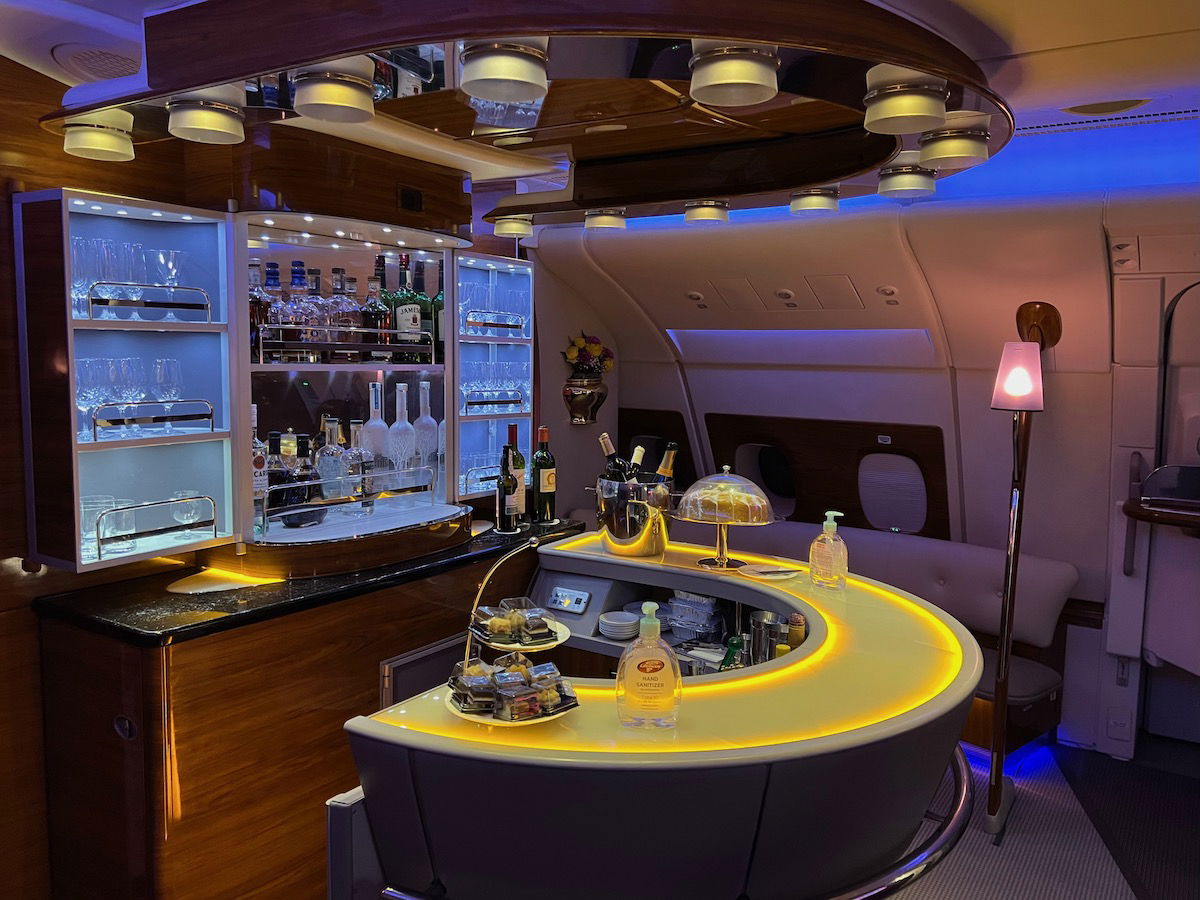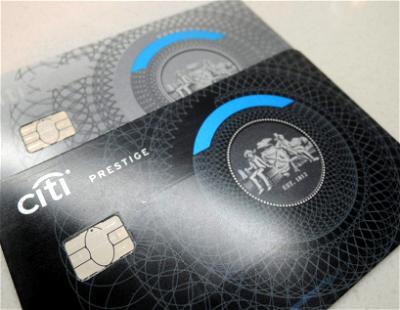I have roughly two dozen credit cards, though I hold onto these cards for a variety of reasons. I have some of these cards because they help me maximize my everyday spending, while I have other cards because of the ongoing perks that they offer.
In this post I wanted to share the cards that I spend the most money on, as this has evolved over time.
In this post:
Cards worth having for the benefits
There are cards I keep long term primarily for the benefits they offer, without actually putting much spending on them. Just to give a few examples:
- The Platinum Card® from American Express (review) has a $695 annual fee (Rates & Fees) and is worthwhile for all of the credits that it offers (for airline fees, Uber, hotels, CLEAR, etc.), plus the lounge access, including access to Centurion Lounges, Delta Sky Club®, and more (Enrollment is required for select benefits)
- The Marriott Bonvoy Brilliant® American Express® Card (review) has a $650 annual fee (Rates & Fees) and is worthwhile for up to $300 in dining statement credits per calendar year (up to $25 per month) for eligible purchases at restaurants worldwide, Platinum Elite status as long as you have the card, and a free night award valid at properties costing up to 85,000 points per night.
- The IHG One Rewards Premier Credit Card (review) has a $99 annual fee and offers an anniversary free night certificate, IHG One Rewards Platinum status, a fourth night free on award redemptions, and more

Cards I spend the most money on
With the above out of the way, I figured I’d talk a bit about the cards I use most for everyday spending, including personal and business purchases.
Which cards are at the top of my wallet, and under what circumstances do I use them? I use some cards because they maximize my return on everyday spending, while I use other cards because they have valuable category bonuses, ranging from dining, to groceries, to gas stations, or because they’re especially lucrative for large purchases.
Below are the seven cards that I’m spending the most money on, roughly in the order of the amount that I spend on them annually.
Capital One Venture X Rewards Credit Card
This $395 annual fee card has become my go-to card for everyday personal spending, and it’s even what I pay my federal income taxes with. The card offers 2x miles per dollar spent with no foreign transaction fees, and I consider Capital One miles to be just as valuable as other transferable points currencies, given all the great transfer partners.
While some people may initially be put off by the card’s annual fee, personally I don’t view this card as actually costing much to hold onto, given that it offers a $300 annual travel credit, 10,000 anniversary bonus miles, and much more.
I value Capital One miles at 1.7 cents each, so to me this card offers a 3.4% return on all spending.
Read a full review of the Capital One Venture X, apply for the Capital One Venture X.

Capital One Venture X Business
There’s a lot of overlap between the personal and business version of the Venture X, and I have them both. This $395 annual fee card has become my go-to card for everyday business spending. The card offers 2x miles per dollar spent with no foreign transaction fees. I also appreciate that the card has no preset spending limit (since it’s a charge card rather than a credit card), and it’s also useful to keep business expenses separate.
The card’s annual fee is easy to justify, thanks to it offering a $300 annual travel credit, 10,000 anniversary bonus miles, and much more.
I value Capital One miles at 1.7 cents each, so to me this card offers a 3.4% return on all spending.
Read a full review of the Capital One Venture X Business, apply for the Capital One Venture X Business.

Chase Sapphire Reserve®
This card has a $550 annual fee, though offers a $300 annual travel credit that can be applied toward any purchase coded as travel, making it one of the easiest to use travel credits. Therefore I consider this card to really cost me $250 per year. The card also offers several useful perks, including a Priority Pass membership.
When it comes to spending, this card offers 3x points on dining and travel. The travel category is particularly useful for me, and this card gets most of my non-airfare travel spending. On top of that, what’s great about this card is that it’s an excellent “hub” card that allows you to maximize the Ultimate Rewards points you earn across all cards.
I value Chase Ultimate Rewards points at 1.7 cents each, so to me this card offers a 5.1% return on dining and travel.
Read a full review of the Chase Sapphire Reserve, apply for the Chase Sapphire Reserve.

The Platinum Card® from American Express
While I primarily have the Amex Platinum for the perks that it offers, it’s still a card that I spend a significant amount on. That’s because the card offers 5x points on airfare purchased directly with airlines (up to $500,000, and then 1x), and it also offers excellent travel coverage. I spend quite a bit on airfare, so earning 5x points on those purchases while having solid travel protection is great. Note that, unlike typical credit cards, this card allows you to carry a balance for certain charges, but not all.
I value Amex Membership Rewards points at 1.7 cents each, so to me this card offers an 8.5% return on airfare.
Read a full review of the Amex Platinum Card, apply for the Amex Platinum Card.

World of Hyatt Credit Card
While I wouldn’t ordinarily say this is the best card for everyday spending, I put $15,000 of spending on the Hyatt Card for a reason, and find that holding onto this card is a no-brainer.
The card already offers five elite qualifying nights plus a Category 1-4 free night certificate annually just for paying the $95 annual fee.
On top of that, you get an additional two elite nights toward status annually for every $5,000 you spend, and you also get a second Category 1-4 free night certificate when you spend $15,000 on the card in a cardmember year.
This means that if you spend $15,000 on the card you’re getting an incremental six elite nights (this can help you earn Globalist status) plus a second free night certificate, which I find to be well worth it. I also try to make as much of my spending be at Hyatt hotels (where I earn 4x points).
Read a full review of the World of Hyatt Card, apply for the World of Hyatt Card.

Citi Prestige Card
The Citi Prestige Card is no longer open to new applicants, though it’s a card that I continue to hold onto. Why? Well, the card offers 5x points on dining globally. Not only does the card earn 5x points when dining out, but you can also earn 5x points on restaurant takeout and delivery, which is pretty awesome.
I value Citi ThankYou points at 1.7 cents each, so to me this card offers an 8.5% return on dining.
The card does have a $495 annual fee, though the card’s $250 annual travel credit helps offset that. Furthermore, this card allows me to maximize the value I get with the Citi Double Cash® Card (review), which is a valuable no annual fee Citi card.
Since this card isn’t open to new applicants anymore, it’s not useful for those who don’t already have it. If you want to get into the Citi ThankYou ecosystem, consider the Citi Strata Premier℠ Card (review), which also has a compelling value proposition.
Read a full review of the Citi Prestige.

Bilt Mastercard®
The no annual fee Bilt Mastercard is known for letting you earn points for paying your rent with no fee, but I’ve also had luck using this card to pay my HOA. That means I’ve been able to earn credit card rewards for my HOA, all without paying a fee.
This does require making at least five purchases with the card per billing cycle. I use this card to pay for parking when going around town, and that covers the five transaction per month requirement.
Read a full review of the Bilt Mastercard, apply for the Bilt Mastercard.

The twist with my card spending this year
Now, there’s a slight twist with my credit card spending. The above covers my general approach to spending nowadays, but it leaves out one important factor. In late 2023, I applied for the Chase Freedom Unlimited® (review), which ordinarily offers 3x points on dining and drugstore purchases, and a minimum of 1.5x points on all eligible purchases.
When I applied for this card, there was a limited time welcome offer where you could earn double rewards for the first 12 months, with no cap on the bonus (to be clear, this offer isn’t currently available). I applied for the card with that offer, and it means I’m earning 6x points on dining and 3x points on everyday spending. So this card has been getting a vast majority of my spending for the past year, and most of my other cards have been collecting dust.
Still, since this offer isn’t available right now, I figured it would be useful to provide a rundown of the cards that I’m generally using as part of my strategy.

Bottom line
I’d like to think I have a pretty good credit card setup, as I’m earning anywhere from 2-5x points per dollar spent on my credit cards for everyday spending. When you factor in all the cards, I’m earning over 3x points per dollar spent on average, which I’d value at a return of over 5%. That’s excellent if you ask me. To recap:
- My favorite card for everyday, non-bonused personal spending is the Capital One Venture X, while my favorite card for everyday, non-bonused business spending is the Capital One Venture X Business
- I use the Chase Sapphire Reserve for my non-airfare travel purchases, the Amex Platinum for my airfare purchases, and the Citi Prestige for my dining purchases
- I think it’s worth spending $15,000 on the World of Hyatt Card every year for the additional six elite nights plus free Category 1-4 certificate
- The Bilt Mastercard lets me earn rewards for paying my HOA, all without having to pay a credit card fee
What are the primary cards you use for your credit card spending?
The following links will direct you to the rates and fees for mentioned American Express Cards. These include: The Platinum Card® from American Express (Rates & Fees), and Marriott Bonvoy Brilliant® American Express® Card (Rates & Fees).





Also I think this is a pad promotion because there are some great cards from other providers and unrealistic for most because many people would only juggle between a few cards.
What would be some examples of great cards from other providers?4x MR points with Amex Gold is worth more than 5%, so I’m not sure I see the advantage of the Amazon card.
Interesting I have never seen you mention about the Amazon Prime credit card. This card earns 5% cash back for Amazon, Whole Foods, and rotating categories. It is a free card but requires you to pay the Prime membership fee. If you spend some money on Amazon or at Whole Foods you should be able to recoup that fee plus more.
Interesting that neither Amex Gold (personal) with 4x at grocery/restaurants or Chase Ink Cash with 5x at office stories made the cut. Those are super useful categories, particularly when combined with gift card options. Major workhorses for me when I’m not chasing sign up bonus (which is most of the time!).
Fun post. Here’s my list.
1. C1 VX for catchall personal.
2. Amex BBP for business.
3. Amex Platinum for airfare and car rentals (I have the $25/rental primary coverage option… I’ve used it once, and it was so easily taken care of that it’s my go to).
4. CSP for dining, streaming, and non-airfare and non-car rental travel. CSR isn’t worth the AF to me.
In the future I...
Fun post. Here’s my list.
1. C1 VX for catchall personal.
2. Amex BBP for business.
3. Amex Platinum for airfare and car rentals (I have the $25/rental primary coverage option… I’ve used it once, and it was so easily taken care of that it’s my go to).
4. CSP for dining, streaming, and non-airfare and non-car rental travel. CSR isn’t worth the AF to me.
In the future I want to get a C1 SavorOne for groceries and entertainment, the latter which is a big spend category of ours.
Lucky,
Why no Aspire card as a card just for the benefits? It’s easy to use the $600 in statement credits between airlines and resorts and the FNA can be used anywhere standard rooms are available. Diamond status is included and quite valuable globally (and hey, even if it’s just US at least you’ll get a small food credit that can add up.)
I’m using my FNA this holiday weekend at the WA Los...
Lucky,
Why no Aspire card as a card just for the benefits? It’s easy to use the $600 in statement credits between airlines and resorts and the FNA can be used anywhere standard rooms are available. Diamond status is included and quite valuable globally (and hey, even if it’s just US at least you’ll get a small food credit that can add up.)
I’m using my FNA this holiday weekend at the WA Los Cabos Pedregal and got a free uograde to a $3500 per night 3 bedroom casita.) Needless to say great return on a net effective AF of $50!
Hey Ben, not sure if you covered it on your blog, but why Venture X over US Bank Altitude Reserve? I’m debating between the two.
Why wouldnt you do the $15k spend on the surpass card? I'd totally rather have a FNC from Hilton than the 1-4 from Hyatt
@ DrBadVibes -- Totally agree I'd rather have that, but the catch is that I'm maxed out with Amex's five card limit. I have the Hilton Aspire Card, which I find to be worthwhile. Maybe I should cancel another Amex card, to make room in my wallet for the Hilton Surpass Card.
Ben, your comment about the Hyatt and always putting $15,000 spend on it, made me wonder. You are missing out on $510 in benefits ($15,000*Capital1 2x points). So does that mean you usually get more than $510 from a free night at a Hyatt, or does that include the value for something else, as it seems rather a steep trade-off to me.
At a minimum, he's also getting 15k Hyatt points (which he values at 1.5 cents apiece, so $225). So $225 in points plus the FNA plus the elite nights are probably worth it.
BUT the post says he mostly uses the Hyatt card at Hyatt properties, where he earns 4x Hyatt points, making it a no-brainer.
@ adam -- Good question, so let me share how I approach it. First of all, much of the $15K in spending is typically what I spend at Hyatts annually, where I'm earning 4x points with the card, making it the best card for those purchases. So there's no opportunity cost there.
But let's say that all of the spending was in non-bonused categories. $15K in spending on the card would earn me 15K Hyatt...
@ adam -- Good question, so let me share how I approach it. First of all, much of the $15K in spending is typically what I spend at Hyatts annually, where I'm earning 4x points with the card, making it the best card for those purchases. So there's no opportunity cost there.
But let's say that all of the spending was in non-bonused categories. $15K in spending on the card would earn me 15K Hyatt points, plus a Category 1-4 free night award.
I'd say that I value 30K Capital One miles roughly the same as 15K Hyatt points plus a Category 1-4 free night award, and that's not even factoring in the six elite nights (I'm lifetime Globalist, but they still help me earn incremental Milestone Rewards perks).
But the math is never that "bad" for me, since I do spend at least several thousand dollars per year at Hyatts. Hope that makes sense. :-)
This is great, thanks so much for sharing, Ben! Using Venture X for your non-bonus spend makes sense over a Chase card, since Chase doesn't have a 2x everywhere card. And I assume you value Cap 1 miles more than Citi (which is why you don't use the Double Cash card). But why use Venture X biz instead of the Amex BBP? Do you value 2x Cap 1 miles more than 2x MR points? Or do you just have enough MR points/other ways to earn them?
@ LP -- Great question! To be honest, I have/earn enough Amex points through other means, including welcome offers. The Blue Business Plus is great as well, but between the foreign transaction fees and the cap on spending, I just funnel most of my everyday spending through Capital One cards, to keep it easier.
I used to max out the Amex Blue Business Plus every year, but don't bother anymore. But if you don't have...
@ LP -- Great question! To be honest, I have/earn enough Amex points through other means, including welcome offers. The Blue Business Plus is great as well, but between the foreign transaction fees and the cap on spending, I just funnel most of my everyday spending through Capital One cards, to keep it easier.
I used to max out the Amex Blue Business Plus every year, but don't bother anymore. But if you don't have a huge Amex points balance, I do think it's a good option, and I even slightly prefer Amex points to Capital One miles.
Ben, how much non-US, non-bonuses spending do you have?
@ Fred Farkle -- Most of my non-US spend is in the travel category, so often goes on the Chase Sapphire Reserve. I still find it easier to just use one card for everyday, non-bonused spending, which is why I've consolidated to the Venture X.
Curious why CapOne Venture X is superior in your book to the Chase Freedom Unlimited. While VentureX is 2X on purchase, the Freedom is 1.5X with 1.5 redemption with CSR. Is that you use point transfers more frequently than pay with points? I prefer the flexibility of the latter combined with earning points on “free” tickets.
I’m also still bitter about the never-fully-explained two week inability to transfer CapOne points (while I was in Scandinavia,...
Curious why CapOne Venture X is superior in your book to the Chase Freedom Unlimited. While VentureX is 2X on purchase, the Freedom is 1.5X with 1.5 redemption with CSR. Is that you use point transfers more frequently than pay with points? I prefer the flexibility of the latter combined with earning points on “free” tickets.
I’m also still bitter about the never-fully-explained two week inability to transfer CapOne points (while I was in Scandinavia, stranded by the SAS strike and looking for a return flight).
@ BC -- Yeah, if you're looking to redeem points as cash toward a travel purchase, than the Freedom Unlimited offers a better return. However, personally I like transferring to travel partners, which is why I'd rather earn 2x Capital One miles rather than 1.5x Chase Ultimate Rewards points.
I wouldn't want to only collect Capital One miles, but I earn a fair number of points with other currencies as well, so I consider it part of an overall balanced strategy.
3 of my last 4 TATL have been with Flying Blue, so CapOne pulls ahead in earning
Do you ever spend outside of airports, airplanes and five-star hotels?
@ Gwen -- I do... that would be covered by using the cards that maximize my return on dining and everyday, non-bonused spending. As you can see, the non-bonused category is where I spend the most.